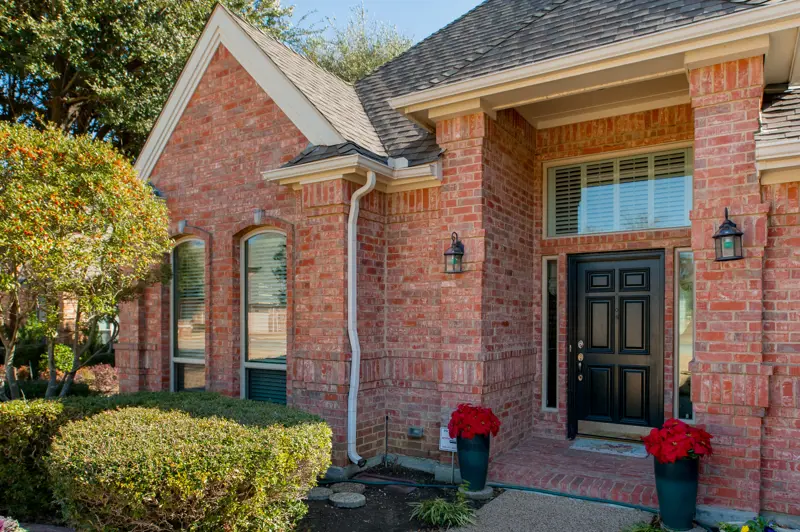
What is Solar Heat Gain Coefficient For Windows?
When you live in Texas, you probably don't worry about insulation too much. However, there’s another side to the insulation and energy efficiency coin: extreme heat.
There are some very hot months in the year, and our HVAC systems need to be able to keep us cool when the temperature rises. If you’re researching cooling options and energy efficiency, you should probably look into something called “solar heat coefficient” or SHGC. In fact, this is the single most important rating your windows need to have in warm places like Texas.
Why Does Energy Performance Matter?
Of course, energy performance matters on an individual level. We all want to lower our utility bills if we can – and be cool in summer and warm in winter. However, saving energy is also one of the most important things we can do for the environment.
In fact, according to the EPA↗, power generation is one of the top three greenhouse gas producers. Air conditioning, in particular, has been singled out in recent reports and studies↗. So, while you don’t have to resign yourself to a lifetime of sweating on the couch, it doesn’t hurt to lower the heat in your home in other ways too.
What Is Solar Heat Gain Coefficient?
Solar heat gain coefficient is a number that refers to how much solar radiation penetrates a home through openings like windows, skylights, and doors. The solar heat gain coefficient or SHGC is expressed as a fraction or decimal, and the lower it is, the better the SHGC rating for that particular product is.
Of course, we know that solar radiation produces light as well as heat. So, while we want to get as much light as possible into our homes and workspaces, we also want to block out as much heat as we can.
Ordinary clear glass has a SHGC of about 0.86, which means that the answer to the question of what is a good solar heat gain coefficient for windows is really as far below that as you can get.
How are SHGC Ratings Determined?
SHGC ratings are determined by an organization known as the National Fenestration Rating Council (NFRC), which was formed in 1993. This organization tests commercial window and door products under a strict set of guidelines, to create a uniform measurement for each type of window.
To do this, they place each window or door in a testing facility, with the same amount of light and heat, at the same angle for the same amount of time, and they measure how much heat passes through the window. This means that the test, and the resulting ratings are as fair and accurate as possible.
How Important is SHGC in Different Climates?
The importance of SHGC differs, as we have already mentioned, based on where you are. In a very hot southern state like Texas or Florida, SHGC is very important, because it can get very hot, and even winters are relatively warm.
In states like Alaska, on the other hand, the solar heat gain coefficient is less important than the insulation properties of a window or door. SHGC ratings are usually still applied to windows and doors that are sold there, but you would probably be more interested in their R or U values.
What is the Solar Heat Gain Coefficient Requirement for Texas?
Texas is a warm state, so it has stricter SHGC requirements than many. In fact, if you’re building in Texas now, you will need to use windows that have a SHGC of 0.25 or lower. This is usually achieved by using glass with coatings or films applied to them, that help to block out heat but still let the light through.
What are the Benefits of Energy-Efficient Windows?
There are several important benefits of choosing energy efficient windows.
First and of most direct importance is the fact that they help to regulate the temperature in your home or office. Energy efficient windows help to block excess heat, but are also well insulated and seal well, so they keep heat in in the winter.
Second, and related to the temperature control properties of energy efficient windows is that you will save on your utility bills. Less heat coming in or escaping (depending on the season) means less work for your HVAC system. That translates into dollar savings.
Finally, there’s the environment. Producing energy requires a lot of fuel, and that means more pollution and greenhouse gas emissions. Neither of those is good for the planet!
Conclusion
If you’re building a new home, building codes in most places will already dictate the SHGC required for your windows and doors. However, older homes might still have windows that aren’t SHGC rated. Upgrading your windows to energy efficient versions will keep you more comfortable during weather extremes, save you money on your bills and do a little bit to help the planet.
So, when you talk to a window supplier, ask them what is a good solar heat gain coefficient, and the best for your area, and decide accordingly.
Oops!
We don't currently serve your area but do want to help you plan your project. Try our Build & Price tool to get an idea of window & door costs within DFW. Your area may be higher or lower but at least you'll have some idea of the price.
Thanks for stopping by.







